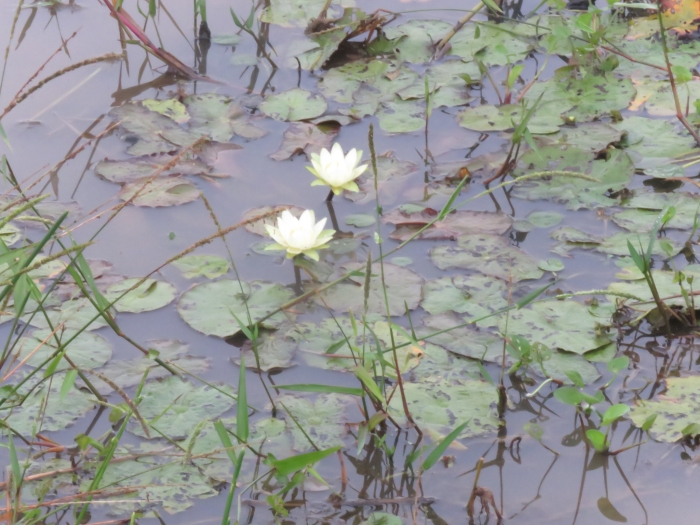Amazon Water Lily
(Nymphaea amazonum)
Amazon Water Lily (Nymphaea amazonum)
/
/

Vincent A. Vos
CC BY 4.0
Image By:
Vincent A. Vos
Recorded By:
Copyright:
CC BY 4.0
Copyright Notice:
Photo by: Vincent A. Vos | License Type: CC BY 4.0 | License URL: http://creativecommons.org/licenses/by/4.0/ | Rights Holder: Vincent A. Vos | Publisher: iNaturalist | Date Created: 2020-04-27T06:45:59-07:00 |












Estimated Native Range
Summary
Nymphaea amazonum, commonly known as Amazon Water Lily, is a perennial aquatic herb native to still and slow-moving freshwater habitats such as permanent ponds, lagoons, and canals in Mexico and tropical Central and South America. It is characterized by its large, ovate-elliptic leaves that float on the water’s surface, and its dark brown to black rhizomes anchored in the substrate. The leaves can be quite large, providing shade and habitat for aquatic life. Amazon Water Lily produces fragrant flowers that are showy and typically white, floating on the water and opening during the day. These flowers are pollinated by Cyclocephala beetles, which are attracted to the scent and the white coloration.
In cultivation, Nymphaea amazonum is valued for its ornamental flowers and the overall aesthetic it brings to water gardens and ponds. It requires full sun to partial shade and thrives in warm, shallow water with sandy-quartzitic soils. The plant’s rhizomes are edible and have been traditionally consumed, while its extracts are known for antimicrobial properties and have been used in traditional medicine to treat ulcers. Gardeners should be aware that water lilies can spread quickly and may need to be managed to prevent them from overtaking small bodies of water.CC BY-SA 4.0
In cultivation, Nymphaea amazonum is valued for its ornamental flowers and the overall aesthetic it brings to water gardens and ponds. It requires full sun to partial shade and thrives in warm, shallow water with sandy-quartzitic soils. The plant’s rhizomes are edible and have been traditionally consumed, while its extracts are known for antimicrobial properties and have been used in traditional medicine to treat ulcers. Gardeners should be aware that water lilies can spread quickly and may need to be managed to prevent them from overtaking small bodies of water.CC BY-SA 4.0
Plant Description
- Plant Type: Herb
- Height: 0.5-1 feet
- Width: 6-15 feet
- Growth Rate: Moderate
- Flower Color: White, Pink
- Flowering Season: Summer
- Leaf Retention: Deciduous
Growth Requirements
- Sun: Full Sun, Part Shade
- Water: High, Aquatic
- Drainage: Standing
Common Uses
Potted Plant, Water Garden
Natural Habitat
native to still and slow-moving freshwater habitats such as permanent ponds, lagoons, and canals in Mexico and tropical Central and South America
Other Names
Common Names: Chapeau D’Eau, Giant Water Lily, Follet, Nenuphar (Lesser Antilles), Ova, Yerba De Hicotea (Puerto Rico)
Scientific Names: , Nymphaea amazonum, Castalia amazonum, Leuconymphaea amazonum, Leuconymphaea goudotiana, Nymphaea alboviridis, Nymphaea amazonum f. goudotiana, Nymphaea amazonum var. amazonum, Nymphaea amazonum var. goudotiana, Nymphaea blanda
GBIF Accepted Name: